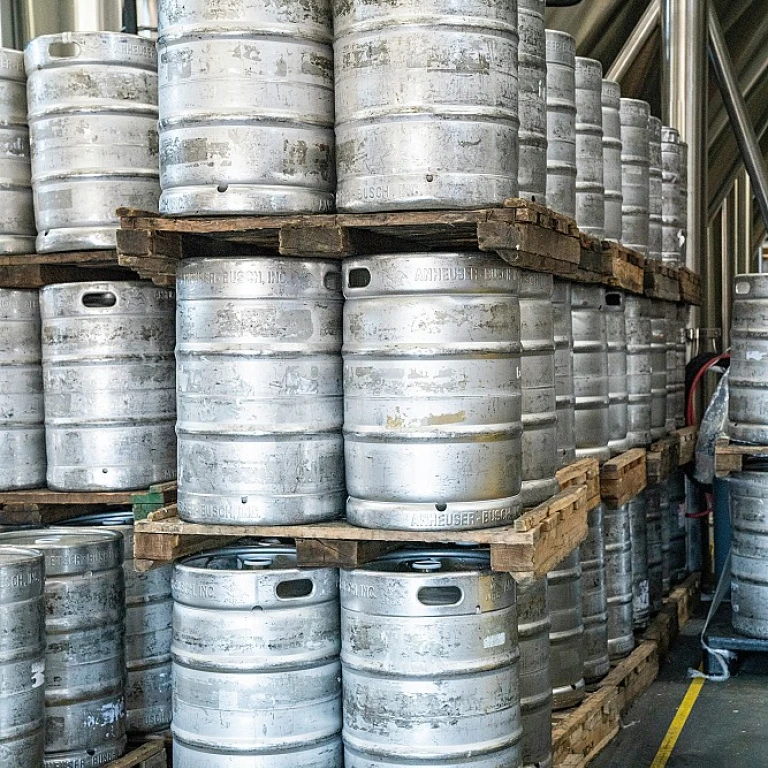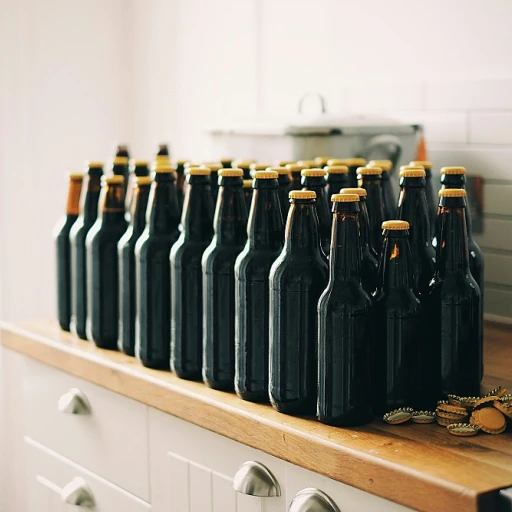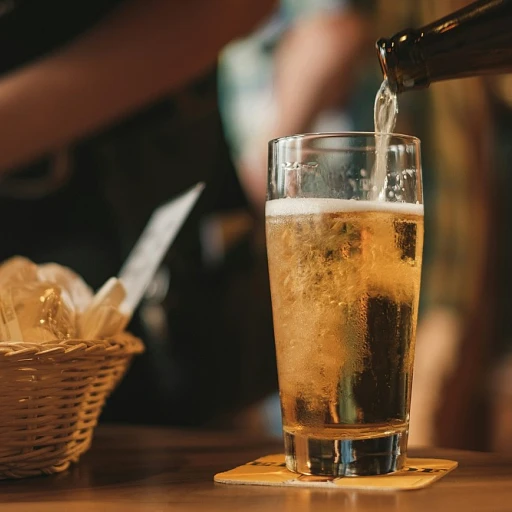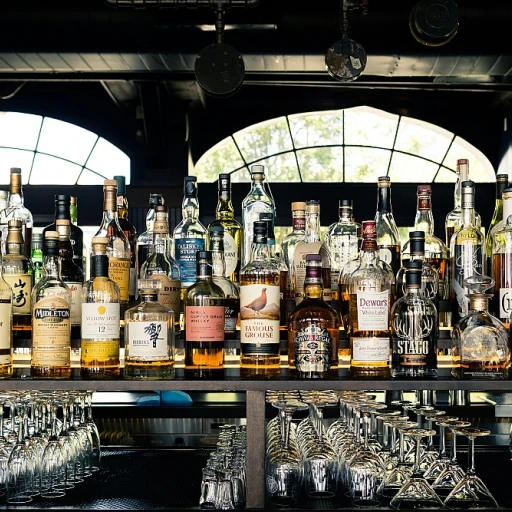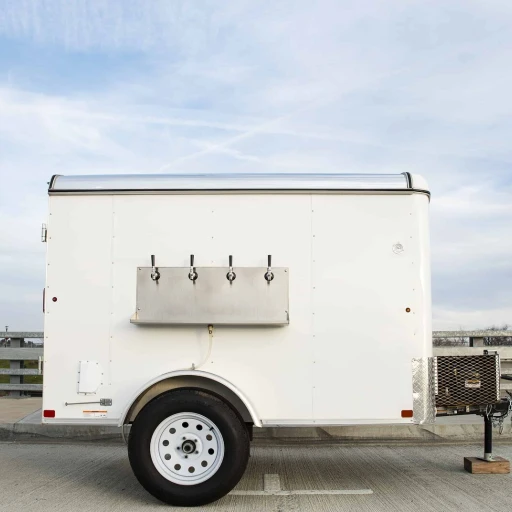
Understanding the average price of a case of beer
What you need to know about average case prices
If you're diving into the beer-buying world, knowing the current price trends is your starting point. The average price of a case of beer in the U.S. is roughly around $20 to $30, but hold on to your pint glasses—this can wildly vary based on brand, location, and even the type of packaging. In states like New Hampshire and Pennsylvania, the cost might be on the lower end, while in places like Alaska, expect to pay a premium. According to a study by the Beer Institute, achieving the best bargain often depends on where you live.
Speaking of averages, you cannot overlook the packaging. For example, a case of domestic beer like Bud Light or Coors Light typically offers more value, with prices on the lower end of the spectrum. These classic lagers provide an affordable option with an ABV (alcohol by volume) around 4.2%. Meanwhile, Mexican lagers, especially popular choices like Modelo Especial and Corona Extra, tend to be pricier but offer a unique taste that many find worth the extra cost.
Case sizes matter too! Most cases come with 24 bottles or cans, but some brands offer variety packs with a mixture of different brews. If you're eyeing a craft beer selection, like those from Sierra Nevada or Allagash, prepare to shell out a bit more, often ranging between $40 to $50. Craft beers are celebrated for their superior quality and unique flavors, but they also come at a steeper price, justified by the intricate brewing processes and premium ingredients.
Now, let's sprinkle in some expert insights. Dan Smullen, a seasoned beer analyst from California, highlights that the trend towards canned beer is significantly influencing pricing. Cans are easier to transport, often more affordable, and environmentally friendlier. Contrarily, some purists argue that bottles provide a better preservation of taste, though that debate is ongoing.
For those looking to score the best deals, you can't ignore delivery and pickup services. Online beer buying via stores like Total Wine or Drizly often offers discounts and convenient home delivery options, which can save you a trip (and potentially some cash).
Stay tuned to explore other crucial aspects like the appeal of Mexican lagers, expert opinions on the latest craft beer trends, and even case studies showing how to snag unbeatable deals. There's a whole six-pack of insights coming your way!
Popular beer pack options available today
Popular beer pack choices you should consider
When you’re thinking about buying a case of beer, there's an impressive variety of beer packs available today. Whether you’re a fan of light beers, lagers, Mexican brews, or craft selections, there’s something for everyone. Let's dive into some of the most popular options.
Modelo Especial Mexican Lager: This renowned beer is known for its crisp and clean taste. Modelo Especial has an ABV of 4.4% and is loved for its smooth drinking experience. As of today, the average price for a pack of 12 cans is around $15 to $18 (Delish).
Corona Extra Mexican Lager: Probably one of the most recognized beers globally, Corona Extra boasts a refreshing and balanced flavor. With a 4.6% ABV, it is perfect for any occasion. According to CNBC, a 12-pack of Corona Extra typically costs about $14 to $17.
Michelob Ultra Superior Light Beer: For those looking to keep calories in check, Michelob Ultra is a standout with only 95 calories per can. Its light and refreshing taste, combined with an ABV of 4.2%, makes it a popular choice. Get a 12-pack for around $13 to $16, according to TrendHunter.
Bud Light Beer: A staple in many households, Bud Light is known for its smooth taste and light body. Bud Light, with a 4.2% ABV, is often sold in 12-packs for approximately $11 to $14, according to Washington Post.
Coors Light Beer: As another fan-favorite, Coors Light offers a crisp, light beer experience at 4.2% ABV. You can usually find a 12-pack in the range of $10 to $13 ( Beverage Industry).
Heineken Original Lager: Heineken's distinctive taste and premium quality put it in a class of its own. With an ABV of 5%, a 12-pack of Heineken can go for about $15 to $18 (Eater).
Kona Big Wave: This golden ale has a light, tropical flavor that pairs perfectly with any outdoor activity. At 4.4% ABV, a 12-pack is generally priced between $13 and $16 (Beer & Brewing).
Expert selections in the craft beer scene
The craft beer segment has exploded in recent years, with many seeking out unique and flavorful brews from smaller, local breweries. Dan Smullen, a well-known beer expert, highlights the rise in popularity of beers like Sierra Nevada, Allagash, and Keystone, which have carved out significant reputations. For example, a survey by the Brewers Association revealed that craft beer sales increased by 7.5% year-over-year as of 2022 ( Brewers Association).
Delivery and pickup options: How they shape your beer experience
The convenience of delivery and pickup options has changed the way many drinkers get their beer. With services like Drizly and Instacart, consumers can order their favorite beers right to their doorsteps. An article on Forbes noted that beer delivery services saw a 300% surge in usage during the pandemic, highlighting a shift in consumer behavior towards more convenient purchasing methods.
As you explore the many options available, it's clear that the beer market today is diverse and exciting. Whether you're interested in traditional lagers, light beers, or finding the best deals through delivery options, the choices are plentiful and ever-growing.
Comparing bottles, cans, and aluminum cans in a beer pack
Cans and bottles: Which works best?
When picking up a case of beer, decisions aren't just about the price tag—they're also about the package. You've got your bottles, cans, and even those shiny aluminum cans. So, let's break it down and figure out what fits best into your beer fridge.
Glass bottles: The classic choice
Glass bottles have a long-standing tradition in beer packaging. Many argue that they offer a purer taste since glass doesn't react with the beer. It's also quite nostalgic to pop open a classic bottle of Heineken Original Lager or the smooth Keystone Light. However, bottles can be a bit heavier and prone to breakage if not handled with care. Research from Nielsen in 2020 shows that around 43% of American beer drinkers still prefer glass bottles for their beer.
Aluminum cans: The modern favorite
Cans are lightweight and highly portable, making them a favorite for many outdoor activities. As lightweight as they are, aluminum cans also provide excellent protection against light, which can spoil the beer. An interesting fact flaunted by Brewers Association reports say that over 60% of the beer sold in the U.S. in 2021 was in cans. Plus, many breweries, including Sierra Nevada and Allagash, are turning to cans for their craft beers.
The rise of aluminum bottles
Aluminum bottles offer a sleek middle ground—they're just as portable as cans but give off a more premium feel, which isn’t too hard to spot in products like Michelob Ultra Superior Light Beer. Aluminum bottles are sturdier than regular cans and offer the same benefits of being light-blocking. In many ways, they're becoming the hip new package for those looking to mix portability with a touch of class.
Environmental impact
Let's not forget the environment! Glass is recyclable but requires a considerable amount of energy to process. Aluminum, on the other hand, is also recyclable and requires less energy than glass to recycle. A study by The Guardian noted that recycling aluminum saves up to 95% of the energy needed to produce new aluminum, making it a more sustainable choice overall.
The appeal of Mexican lagers: Modelo Especial and Corona Extra
What sets Mexican lagers apart from the rest?
Mexican lagers, especially brands like Modelo Especial and Corona Extra, have carved a unique niche in the beer market. These lagers are not only popular in the U.S. but are also globally recognized for their distinct flavor profiles. The cultural and regional aspects of Mexican lagers add to their universal appeal, making them stand out amidst a plethora of beer choices.
Modelo especial: a sophisticated blend of flavor
Modelo Especial is renowned for its rich taste and a well-balanced flavor. This Mexican lager boasts an alcohol by volume (ABV) of 4.4%, which makes it a refreshing choice without being too overpowering. The beer features a blend of orange blossom honey, herbs, and a slight hint of malt, creating a taste that is both smooth and complex. According to Anheuser-Busch, which distributes Modelo in the U.S., this beer has enjoyed a 13% increase in sales over the past year. Beer enthusiasts and casual drinkers alike appreciate its sophisticated blend, making it a go-to option for different occasions.
Corona extra: simplicity at its finest
On the flip side, we have Corona Extra, often served with a wedge of lime. This light lager features a slightly lower ABV of 4.5%, making it a light, refreshing option for casual drinking. Corona's crisp and slightly sweet taste profile has made it one of the best-selling beers globally. According to a Nielsen report, sales of Corona Extra surged by 8.7% during the year 2022.
Moreover, no discussion about Mexican lagers would be complete without mentioning their packaging options. Both Modelo and Corona are available in various pack sizes, including 12-pack cans and 24-pack bottles. This flexibility in packaging makes them versatile for both personal enjoyment and social gatherings.
Why the packaging of Mexican lagers matters
When comparing packaging options, cans are often preferred for their convenience. Aluminum cans are lighter and more environmentally friendly, as they are easier to recycle. An article by Waste360 highlights that around 75% of all aluminum ever produced is still in use today, thanks to efficient recycling processes. On the other hand, bottles can offer a more 'premium' feel, which some prefer for special occasions.
A word from the experts
Beer expert Dan Smullen notes that the rise of Mexican lagers like Modelo Especial and Corona Extra in the U.S. is primarily due to their light, refreshing qualities that make them suitable for warm weather. 'The easy-drinking nature and versatility of these beers allow them to fit into different social settings, from casual beach days to upscale gatherings,' Smullen states.
In summing up, the appeal of Mexican lagers lies in their unique flavor profiles, packaging options, and the cultural touch they bring to the table. Whether it's the sophisticated taste of Modelo Especial or the simple refreshment of Corona Extra, these beers have something for everyone.
Expert insights on craft beer trends
Craft beer trends shaping the beer industry
Craft beer has taken the beer world by storm. According to the Brewer’s Association, craft beer sales saw a 12.2% increase in sales volume in 2022, making it a considerable player in the beer market.
One prominent trend is the rise of hazy IPAs or New England IPAs. These beers, known for their cloudy appearance and juicy, fruity flavors, have become immensely popular. James Sullivan, head brewer at Allagash Brewing in Maine, says, "Hazy IPAs bring in a new segment of consumers who may not have been traditional beer drinkers. It’s a gateway beer."
Another trend that's gaining traction is the demand for low-alcohol or no-alcohol brews. Nielsen data indicates that the non-alcoholic beer segment grew by 38% in 2022. Brands like Heineken 0.0 and Lagunitas IPNA are tapping into this trend, offering flavorful options without the buzz.
Local brewing is also a strong trend. People want beers that represent their hometown. Breweries like Sierra Nevada in California and Alaska's Anchorage Brewing emphasize local ingredients and unique flavors that resonate with their communities. Richard Simmons, a beer analyst at Brewbound, highlights, "Consumers find a sense of pride and connection in local brews. It’s more than just beer. It's a story."
Innovation in sour beers, such as Berliner Weisse and Gose, is also a significant trend. These tart, sometimes salty, brews are becoming a summer favorite. According to a report by the Brewers Association, sour beer production increased by 19% in the past year. Courtney Morris, brewing specialist at California's Russian River Brewing, notes, "Sour beers challenge traditional palates. They're an adventurous choice for beer enthusiasts."
For those interested in diversifying their beer experience, buying a variety pack of craft beers offers a taste of different styles and flavors. Popular choices today include mixed packs from Sierra Nevada and New Belgium Brewing, featuring an array of IPAs, lagers, and stouts.
Finally, the push for sustainability in beer production is influencing the craft beer scene. Breweries are increasingly using eco-friendly practices. For example, New Belgium Brewing aims to be a zero-waste brewery by 2025. As consumers become more environmentally conscious, they gravitate towards brands that align with their values.
As we noted in the section about popular beer packs today, craft beer plays a pivotal role in offering variety and catering to the changing tastes of beer drinkers. Whether it's hazy IPAs, local brews, or sustainable practices, the craft beer trend is making waves and transforming the industry, one pint at a time.
How delivery and pickup options impact beer buying
Convenience and speed of delivery services
One of the most significant shifts in beer consumption patterns has been the rise of delivery services like Drizly and Instacart. According to a Brewbound report, Drizly saw a staggering 350% increase in sales in 2020. This growth means that more consumers are opting for the convenience of delivering their favorite beers straight to their doorstep. Whether you fancy a Mexican lager beer like Modelo Especial or prefer a light lager like Michelob Ultra, these services have it all.
Cost implications of delivery vs. pickup
While delivery offers unparalleled convenience, it often comes at a cost. For instance, delivery fees can range anywhere from $5 to $10, or even more during peak times or special occasions. Some services also require a minimum purchase amount, making it important for beer enthusiasts to weigh the total costs. A Washington Post article highlights that while convenience is a big factor, savvy shoppers should consider these additional charges to get the best deal. On the other hand, pickup options at local shops or breweries usually don't incur extra costs, making them a more budget-friendly alternative.
Mix and match variety packs
For those who love trying different flavors, the ability to customize variety packs through delivery services is a huge plus. Services like Tavour allow users to create their own beer pack cans, including options like Sierra Nevada IPA or Kona Big Wave. According to beer expert Dan Smullen from CraftBeer.com, variety packs compel breweries to innovate, often leading to more adventurous brews hitting the market. Such packs can also be a great way to introduce friends to new beers during gatherings, making them a popular choice among craft beer aficionados.
Regional considerations and availability
Where you live plays a significant role in what beers you can get delivered. Certain brands like Heineken Original Lager or Bud Light Beer are universally available, but some more niche or craft options might only be distributed regionally. For instance, Allagash Brewing's unique offerings are more readily available in states like New Hampshire and Rhode Island, whereas brands like Shiner Bock have a stronger presence in Texas. According to a Brewers Association Report, regional availability can affect everything from the delivery time to the freshness of the beers, adding another layer to your buying decision.
Case studies: Finding the best deals on beer
Finding the best value: personal experiences and expert tips
Finding the best deals on beer often feels like a treasure hunt. Let's dive into a few personal experiences and expert tips that can help you save money on your favorite brews.
Expert insights from Dan Smullen
Dan Smullen, a seasoned beer enthusiast and industry expert, provides some valuable advice: 'Keep an eye out for bulk discounts and seasonal promotions. Stores often reduce prices during holidays or major sports events. It’s not just about finding the cheapest option, but ensuring you're getting quality at a good price.'
According to the 2021 Drizly Beer Study, 65% of consumers are willing to pay more for beers they perceive as higher quality. This means it’s possible to balance both cost and quality if you know where to look.
Case study: average pricing across states
Buying a case of beer can significantly vary depending on your location. For example, in New Hampshire, you might find a case of domestic beer for around $17, whereas in Montana the same pack could run up to $22. Additionally, craft beer prices are generally higher, with states like California and Texas leading the pricing chart.
According to a CNBC report, the average price of a 24-pack of beer in the U.S. is approximately $20. These prices fluctuate depending on the brand, packaging, and type—whether that’s a domestic beer like Keystone or a specialty beer like Kona Big Wave IPA.
Utilizing delivery and pickup for savings
Delivery and pickup options have made it easier than ever to get your beer fix. Online platforms like Drizly or local store pickups can offer exclusive deals and discounts. During the pandemic, more breweries engaged in direct-to-consumer sales, often providing free delivery for larger orders.
'I often use delivery services for bulk orders,' says Joan from Alabama. 'I find I can save a few bucks and also support local breweries by ordering directly from them.'
Smart shopping tips: bottles vs. cans
When balancing between bottles, cans, and aluminum cans, it's essential to consider not just the price but the convenience and your personal preferences too. According to the Brewers Association, cans are increasingly popular due to their portability and eco-friendliness. They also tend to be cheaper than bottles. But don't just focus on individual preferences; always compare the price per ounce to ensure the best value.
Personal savings journey
'I’ve found great deals using loyalty programs,' shares Tim from Pennsylvania. 'Stores like Wegmans and Total Wine & More offer reward points that can be redeemed for discounts on future purchases, which can lower the average price over time.'
By staying informed, leveraging online tools, and looking out for deals, you can enjoy your preferred beers without breaking the bank. Happy hunting!
Controversies in the beer industry
The hidden battles: tax regulations and market control
Tucked away from the spotlight, the beer industry faces several controversies that affect prices, availability, and even the variety of beers that reach you. One key player in these disputes? Tax regulations.
Take the case of New Hampshire and Alabama, for example. New Hampshire prides itself on having one of the lowest beer tax rates in the U.S., at around $0.30 per gallon according to the ">Tax Policy Center. Meanwhile, Alabama suffers under one of the highest, sitting at a whopping $1.05 per gallon. This discrepancy not just impacts your wallet but also influences what's stocked on the shelves.
Experts like Dan Smullen from the Brewers Association highlight that these taxes can hamper small breweries. Brands like Sierra Nevada and Allagash often need to adjust their distribution strategies based on these varying tax structures, which ultimately trickle down to us, the consumers.
Long road ahead: the debate over aluminum tariffs
Another controversy that can hit where it hurts—your favorite aluminum cans. In recent years, tariffs on imported aluminum have turned the spotlight on packaging costs. This hits close to home for fans of drinks like Michelob Ultra or Coors Light.
According to a report by the ">Craft Brewers Conference, the additional costs for aluminum cans have been passed onto consumers, bumping up prices for products in a case pack. Reports and studies confirm these hikes, showing a rise ranging between 3% to 7% in the final price of a case of beer.
Craft versus mass production: quality or quantity
The craft beer scene brings its own set of controversies, mainly revolving around quality versus quantity. Brewers like Kona Big Wave and Heineken Original Lager often find themselves battling perceptions about what makes a beer worth its price.
According to reviews from ">BeerAdvocate, there's a split public sentiment. While craft beers are celebrated for quality and unique flavor profiles, they often come with a heftier price tag. This makes the current pricing landscape a battleground for both consumers and producers.
Distribution wars: 'big beer' versus local breweries
And then there's the battle for shelf space. Big players like Miller Lite and Bud Light are seen as dominators, often accused of squeezing out local brews. This is particularly evident in states like Texas and Montana.
Case studies show that local breweries in Pennsylvania and South Dakota struggle for prominence, often overshadowed by established names with larger marketing budgets. Reports by the ">Brewers Association highlight that the control over distribution channels is a significant factor, influencing what beers make it to your local stores.
These behind-the-scenes fights shape the current price and variety of beer packs available today, driving the ongoing debate between supporting local gems or opting for established brands. So, when deciding on your next case of beer, remember there's a lot more bubbling beneath the surface than just hops and barley.

